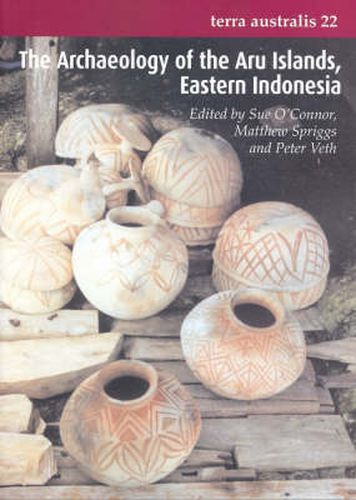Readings Newsletter
Become a Readings Member to make your shopping experience even easier.
Sign in or sign up for free!
You’re not far away from qualifying for FREE standard shipping within Australia
You’ve qualified for FREE standard shipping within Australia
The cart is loading…






This
volume describes the results of the first archaeological survey and
excavations carried out in the fascinating and remote Aru Islands, Eastern
Indonesia between 1995 and 1997. The naturalist Alfred Russel Wallace, who
stopped here in search of the Birds of Paradise on his voyage through the
Indo-Malay Archipelago in the 1850s, was the first to draw attention to the
group. The results reveal a complex and fascinating history covering the last
30,000 years from its early settlement by hunter-gatherers, the late Holocene
arrival of ceramic producing agriculturalists, later associations with the
Bird of Paradise trade and the colonial expansion of the Dutch trading
empires.
The excavations and finds from two large Pleistocene caves, Liang Lemdubu
and Nabulei Lisa, are reported in detail documenting the changing
environmental and cultural history of the islands from when they were
connected to Greater Australia and used by hunter/gatherers to their
formation as islands and use by agriculturalists. The results of the
excavation of the late Neolithic - Metal Age midden at Wangil are discussed,
as is the mysterious pre-Colonial fort at Ujir and the 350-year old ruins of
forts and a church associated with the Dutch garrisons.
$9.00 standard shipping within Australia
FREE standard shipping within Australia for orders over $100.00
Express & International shipping calculated at checkout
Stock availability can be subject to change without notice. We recommend calling the shop or contacting our online team to check availability of low stock items. Please see our Shopping Online page for more details.
This
volume describes the results of the first archaeological survey and
excavations carried out in the fascinating and remote Aru Islands, Eastern
Indonesia between 1995 and 1997. The naturalist Alfred Russel Wallace, who
stopped here in search of the Birds of Paradise on his voyage through the
Indo-Malay Archipelago in the 1850s, was the first to draw attention to the
group. The results reveal a complex and fascinating history covering the last
30,000 years from its early settlement by hunter-gatherers, the late Holocene
arrival of ceramic producing agriculturalists, later associations with the
Bird of Paradise trade and the colonial expansion of the Dutch trading
empires.
The excavations and finds from two large Pleistocene caves, Liang Lemdubu
and Nabulei Lisa, are reported in detail documenting the changing
environmental and cultural history of the islands from when they were
connected to Greater Australia and used by hunter/gatherers to their
formation as islands and use by agriculturalists. The results of the
excavation of the late Neolithic - Metal Age midden at Wangil are discussed,
as is the mysterious pre-Colonial fort at Ujir and the 350-year old ruins of
forts and a church associated with the Dutch garrisons.